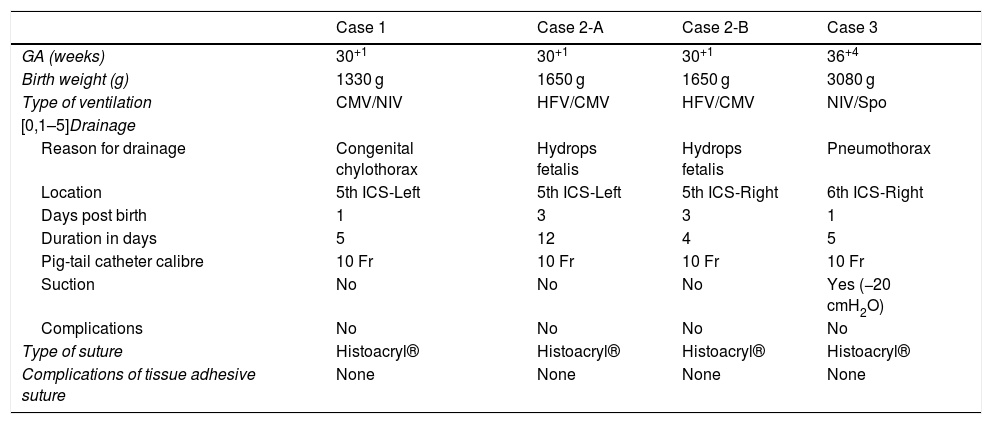Cyanoacrylates are tissue adhesives used to join tissues. From a chemical perspective, they belong to the alkyl cyanoacrylate family and are differentiated by their side chain composition.1,2 Specifically, Histoacryl® consists of n-butyl-2-cyanoacrylate and is indicated for wound closure, sclerotherapy and mesh fixation. In its liquid state, it is a monomeric compound that polymerises on application to tissue, forming a three-dimensional network that keeps tissue edges together. The advantages of using cyanoacrylates as opposed to conventional suturing include their easy application, minimal scar formation and that they form a bacteriostatic, haemostatic, waterproof, and biodegradable barrier.1–3
Cyanoacrylates have been widely used as an alternative option for wound closure in adult and paediatric patients, especially in emergency settings or in delicate areas such as the face, as they do not require the use of local anaesthesia required for suturing, are quicker to use, are less painful, cause less redness, are associated with a lower rate of infection and achieve better cosmetic outcomes. All of the above make their use cost-effective.4
There are few studies in the literature concerning the use of these adhesives in newborn infants. Tissue adhesive has been used for creating stomas in very low birth weight preterm infants with good results,5 and was used to close a bronchopleural fistula in a full-term newborn.6
In the field of neonatology, the traditional approach to closure after removal of a chest drains was the purse string suture, which had poor cosmetic outcomes. Later on, a new approach was used to close the wound caused by placement of the chest drain with one or two silk suture stitches to prevent recurrence of the pneumothorax or persistence of the fistula. This is a painful and stressful procedure that requires sedation and analgesia, which have side effects in newborns that cannot be overlooked. Furthermore, its cosmetic effects are also not ideal.4,5
The use of cyanoacrylates allows an easier and less invasive closure of wound edges. Thus, it reduces the pain of closure and therefore the amount of sedation and analgesia needed for the procedure. Another advantage is the improved cosmetic outcomes compared to traditional sutures. Following the report of positive outcomes in paediatric studies,4–6 the use of these adhesives was proposed for closure of insertion sites after removal of chest drains in newborn infants (Fig. 1).
We present a series of cases of wound closure with a cyanoacrylate adhesive following removal of 4 chest drains in 3 preterm infants. Table 1 summarises the demographic and clinical characteristics of the patients and the characteristics of the chest drainage procedure. The patients had been born at a gestational age of 30–36 weeks with birth weights ranging from 1330 to 3080 g. The indications for pigtail catheter placement for chest drainage were pneumothorax and chylothorax, and the duration of drainage ranged from 4 to 12 days. We observed no complications related to the chest drain or wound closure.
Patient characteristics.
| Case 1 | Case 2-A | Case 2-B | Case 3 | |
|---|---|---|---|---|
| GA (weeks) | 30+1 | 30+1 | 30+1 | 36+4 |
| Birth weight (g) | 1330 g | 1650 g | 1650 g | 3080 g |
| Type of ventilation | CMV/NIV | HFV/CMV | HFV/CMV | NIV/Spo |
| [0,1–5]Drainage | ||||
| Reason for drainage | Congenital chylothorax | Hydrops fetalis | Hydrops fetalis | Pneumothorax |
| Location | 5th ICS-Left | 5th ICS-Left | 5th ICS-Right | 6th ICS-Right |
| Days post birth | 1 | 3 | 3 | 1 |
| Duration in days | 5 | 12 | 4 | 5 |
| Pig-tail catheter calibre | 10 Fr | 10 Fr | 10 Fr | 10 Fr |
| Suction | No | No | No | Yes (−20 cmH2O) |
| Complications | No | No | No | No |
| Type of suture | Histoacryl® | Histoacryl® | Histoacryl® | Histoacryl® |
| Complications of tissue adhesive suture | None | None | None | None |
GA, gestational age; ICS, intercostal space.
Type of ventilation: CMV, conventional mechanical ventilation; HFV, high-frequency ventilation; NIV, non-invasive ventilation; Spo, spontaneous.
Drainage complications: accidental removal, infection, displacement, obstruction.
Closure complications: irritation, wound dehiscence, adhesions, delayed healing, pigmentation, hypertrophic scars and keloids.
At the time of this writing, the follow-up has continued through discharge (2 months), and we plan to complete the follow-up at age 1 year. To date, we have not observed any complications of this sutureless closure, acute (such as erythema, wound dehiscence, adhesions, delayed wound healing) or chronic (hyperpigmentation, hypertrophic scars or keloids).
In this series of 4 cases, the outcomes of this innovative closure technique were good, with good cosmetic results and no complications in the short and medium term, so we believe that cyanoacrylates can be considered a good alternative to traditional silk sutures for closure of chest drain incisions in newborns. Since the sample was small and there was no control group, additional studies with long-term patient follow-up are required to corroborate our findings.
We especially thank the parents of newborns that gave us consent to take photographs. We also thank all the professionals that routinely care for newborns at the NICU of the Hospital Universitario y Politécnico La Fe, Valencia.
Please cite this article as: Lara-Cantón I, Sáenz-González P, García-Robles A, Mocholí-Tomás MDL, Solaz-García Á. Suturas adhesivas mediante cianoacrilato en drenajes pleurales de prematuros. An Pediatr (Barc). 2020;93:52–54.






